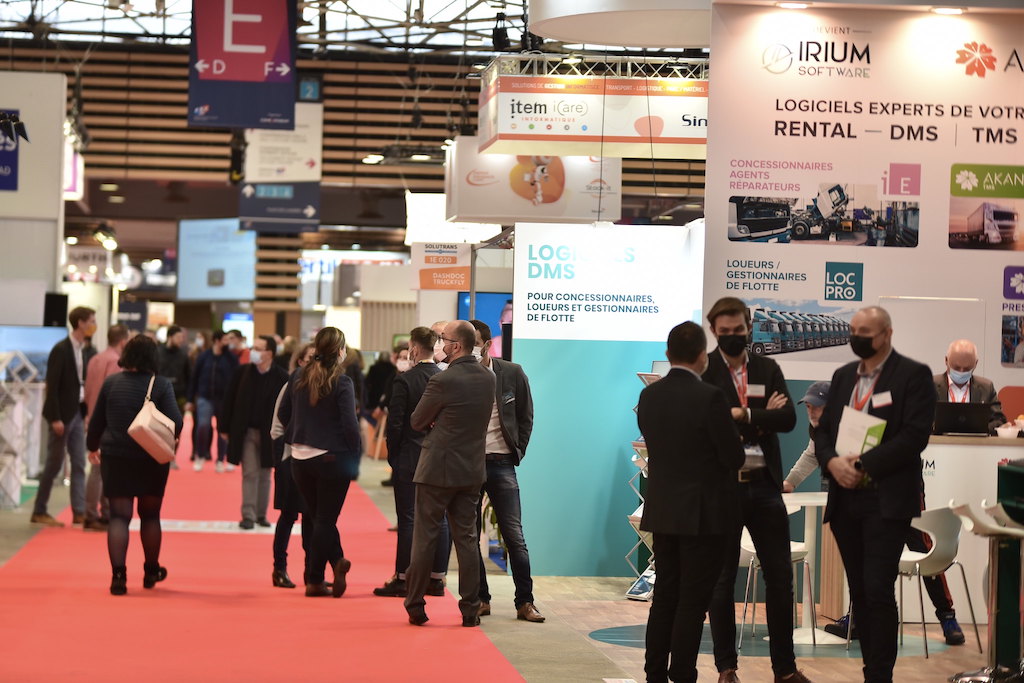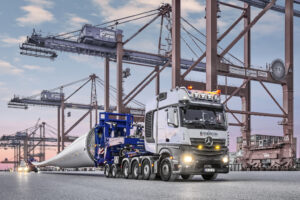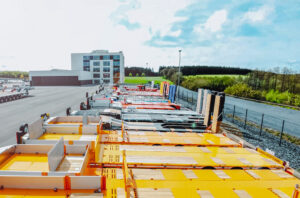The 17th edition of SOLUTRANS, to be held from 21 to 25 November 2023 at Lyon Eurexpo, promises to be a strategically important gathering for all industry professionals. With its stand space already sold out in June, the show will bring together the world’s leading names. SOLUTRANS, which has now become the largest event in Europe for goods transportation, has confirmed its essential role in the energy transition of the mobility sector.
The decarbonisation of transport flows, intrinsically connected with the green transition, constitutes the major challenge for the industry and therefore for SOLUTRANS.
While car and HGV builders have been subjected to (and fulfilled) the requirements of Euro V, then Euro VI, and with Euro VII around the corner, Europe continues to demand more, and we are moving towards a form of carbon neutrality which de facto will eliminate all combustion engine powertrains.
So be it. The FFC, which owns SOLUTRANS, has come around to the belief that the “energy transition” is what it says on the packet, and is a gradual process. In this regard, the event has a duty to educate and explain. Quite simply because many professionals today feel totally lost! Manufacturers are hesitant, policymakers keep changing their minds, bodybuilders are in limbo, our logistical models are in upheaval… A melting pot of solutions is what’s required, and SOLUTRANS is stepping up to assume that very role.
SOLUTRANS 2023: UNDERSTANDING ALTERNATIVE ENERGY SOURCES
Under the terms of the “Fit for 55” package, the European Union aims to cut net greenhouse gas emissions by 45% in 2025 (compared with 2019), 55% by 2030, 65% in 2035, then 90% from 2040 onwards. Each country is required to implement the necessary actions to comply with this collective ambition.
Nobody can say what alternative technology to fossil fuels will prevail over the others. It appears obvious that several will co-exist. An array of grey areas is compounding the general public’s continued incomprehension; uses of these fuels, the maturity of the technology, support from the government and authorities, the appetite of shippers, and the development of infrastructure among them.
SOLUTRANS 2023 will offer a snapshot of the market thanks to a unique agenda.
First of all, the FFC will unveil the latest iteration of its VIsion’AIR report, the only independent survey into the future of the energy mix, which establishes with accuracy the shape of the fleet between now and 2035. VIsion’AIR will be presented at the opening plenary on Tuesday afternoon and will include major revelations on the development of different energy sources. The work conducted jointly by the government’s task force includes a political aspect linked with the limits set by Brussels, while this report aims to be totally independent and closer to grass roots.
Indeed, VIsion’AIR is not just focussed on industry. It takes careful consideration of the expectations of carrier and shipper customers and energy providers, along with the threshold at which they are prepared to accept one energy source or another.
The energy transition will also be supported at SOLUTRANS through a resolute and ambitious programme of talks. Several of them will address – without bias but always in the aim of provoking thought and reflection – gas, battery electric, fuel cell electric and biofuel. With a special mention for retrofitting, an energy mix solution for LCVs and HGVs in an urban environment, consisting of replacing a combustion engine with a less- polluting electric, gas or hydrogen powered alternative. The issue directly impacts the profitability of tradesmen interested in this solution, which is cheaper than the straightforward purchase of an electric vehicle.
And it is also a challenge for the operating model of transport companies, whose use of so-called “clean” vehicles will be compulsory in the future if they wish to have access to city centres.
Finally, continuing in its educational role, SOLUTRANS 2023 has chosen to organise its offering around three fundamental steps in a customer journey:
STEP 1 – ENERGY WORKSHOPS: These are 35-minute themed pitches organised every day to present diesel alternative energy solutions. From electric to gas and hydrogen, biofuels and retrofitting, all are dissected by their designers and proponents to give their customers of the future a clearer idea of what lies ahead.
STEP 2 – ROAD TESTING VILLAGE: It is the only one of its kind in Europe! SOLUTRANS plays host to two test tracks dedicated to fossil fuel vehicles and to “new energy” vehicles, located behind hall 4. A unique opportunity to get behind the wheel of new vehicles and appreciate their qualities.
STEP 3 – A BANKING-INSURANCE-LEASING AREA: Once the vehicle has been test-driven and chosen, this special area in hall 6 will give visitors the chance to meet these market players who have become ever more unavoidable. Indeed, with vehicle values rising, it is becoming more of an issue to finance and insure them. The question of leasing is also apt in this context.
SOLUTRANS 2023, GETTING TO GRIPS WITH TOMORROW’S URBAN LOGISTICS MODELS
This energy transition that is on everyone’s lips and in which we must all be players, is also evident in the city centre access restrictions which are beginning to spread all over France.
This legal framework, which is becoming stricter on a local scale, with the introduction of LEZs/ULEZs (ultra-low emission zones) is set to cause upheaval in the transport world, with some very tangible consequences on transporters and on logistics plans.
In fields like the last mile, return logistics, automated lockers, pick-up points, click and collect, and the change in use of car parks, the development of 360° commerce calls for new agile and flexible solutions to fulfil the promise made to the end consumer.
SOLUTRANS will be a platform for these developments, starting with a true revolution, since a cargo bike area will be making its debut in the centre of Hall 1. Electric cargo bikes can be used to make deliveries in city centres up to 1.6 times faster than a standard size van, without any pollutant emissions.
The various players in the logistics sector agree that bikes represent the best vehicle for this famous “last yard” delivery. And the benefits of cyclo-logistics do not stop at their carbon neutrality.
Quite logically, supplementing vans with cargo bikes also helps reduce fuel consumption, therefore fossil fuels, along with noise pollution in city centres. Additionally, cyclo-logistics help to ease traffic congestion.
Around fifteen stands in Hall 1 will present the range on offer in this sector, the background, the key issues and the solutions to cater to this specific “last yard” delivery in large cities and especially in ULEZs. An indoor 250 metre test track, finally, will present cargo bikes in realistic conditions (in a town, on a slope, with narrow lanes, etc.).







